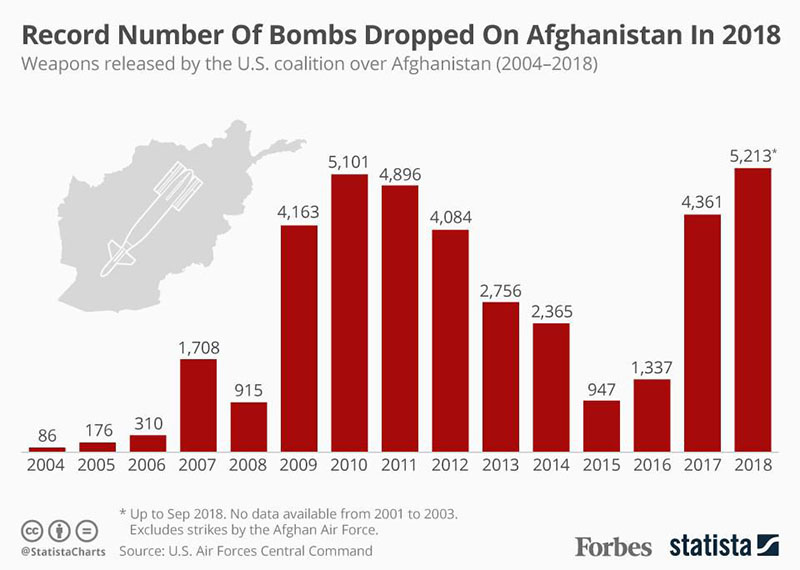By Niall McCarthy
17 years after U.S. forces and the Northern Alliance captured Kabul, half of Afghanistan has been retaken by the Taliban and the war is dragging on. ISIS have also become increasingly active in the country and approximately 14,000 U.S. troops are still serving there in an attempt to contain a growing wave of extremism. Even though the conflict has been making fewer headlines in recent years, the U.S. has never dropped as many bombs on Afghanistan as it did this year. According to U.S. Air Forces Central Command data, manned and unmanned aircraft released 5,213 weapons between January and the end of September 2018.
Previously, 2010 held the record for weapons dropped on Afghanistan with 5,101 releases recorded in total. That was a deadly year which saw 711 ISAF troops and 1,271 civilians killed. Towards the end of Obama's presidency, the number of bombs dropped declined with 947 instances in 2015 and 1,337 in 2016. Since President Trump announced a new Afghan strategy last August and committed more troops to the country, the number of bombs dropped by the U.S. coalition has surged dramatically.
The increase is primarily due to a change in the rules of engagement which allows coalition forces to open fire on the enemy without being in contact with them. That change was orchestrated by Secretary of Defense Jim Mattis who wants to remove such restrictions to employ air power more effectively. Unfortunately, the change in the rules combined with a higher pace of airstrikes by the Afghan Air Force (not included on the following infographic) has also led to more civilian deaths. Last month, the UN announced that the number of civilian casualties in the first nine months of 2018 is higher than in any year since it started documenting them in 2009.




